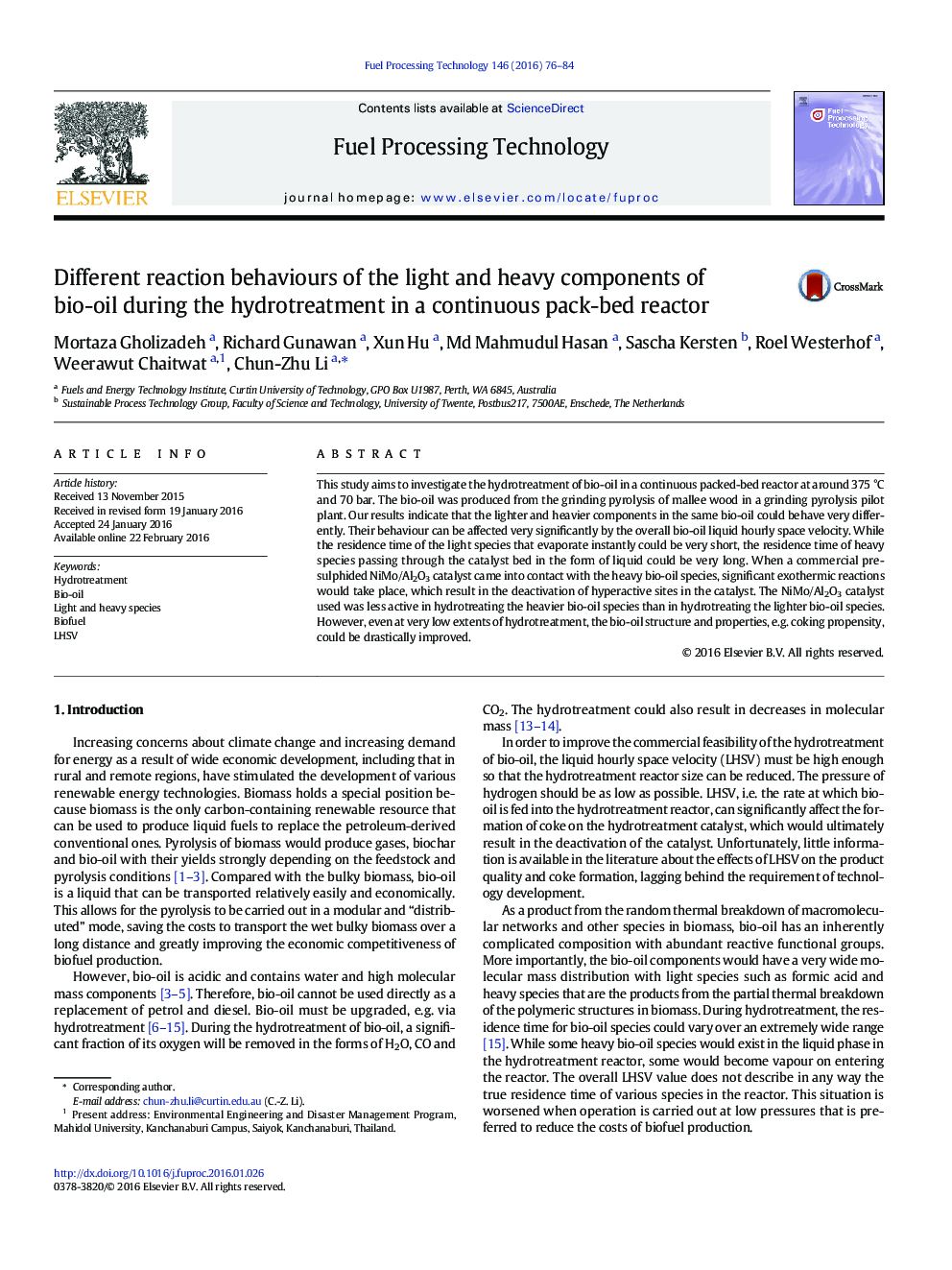| Article ID | Journal | Published Year | Pages | File Type |
|---|---|---|---|---|
| 209228 | Fuel Processing Technology | 2016 | 9 Pages |
•Hydrotreatment of bio-oil in a continuous packed-bed reactor was investigated.•LHSV can drastically affect the hydrotreatment process.•Lighter and heavier components in the same bio-oil could behave very differently.•NiMo was less active for heavier species than lighter species.
This study aims to investigate the hydrotreatment of bio-oil in a continuous packed-bed reactor at around 375 °C and 70 bar. The bio-oil was produced from the grinding pyrolysis of mallee wood in a grinding pyrolysis pilot plant. Our results indicate that the lighter and heavier components in the same bio-oil could behave very differently. Their behaviour can be affected very significantly by the overall bio-oil liquid hourly space velocity. While the residence time of the light species that evaporate instantly could be very short, the residence time of heavy species passing through the catalyst bed in the form of liquid could be very long. When a commercial pre-sulphided NiMo/Al2O3 catalyst came into contact with the heavy bio-oil species, significant exothermic reactions would take place, which result in the deactivation of hyperactive sites in the catalyst. The NiMo/Al2O3 catalyst used was less active in hydrotreating the heavier bio-oil species than in hydrotreating the lighter bio-oil species. However, even at very low extents of hydrotreatment, the bio-oil structure and properties, e.g. coking propensity, could be drastically improved.
